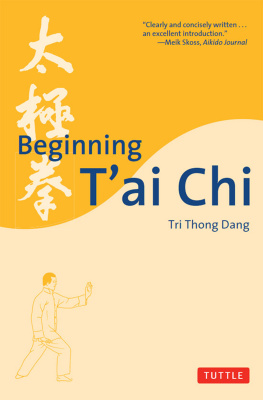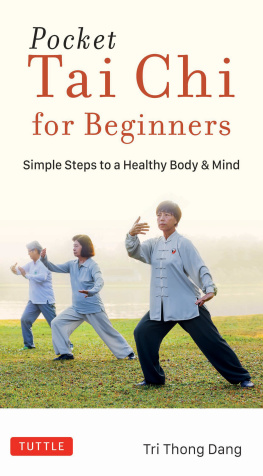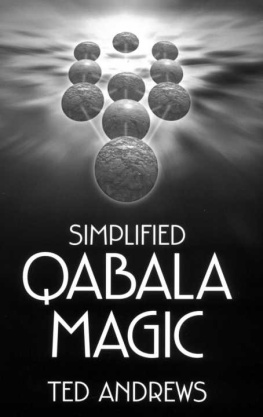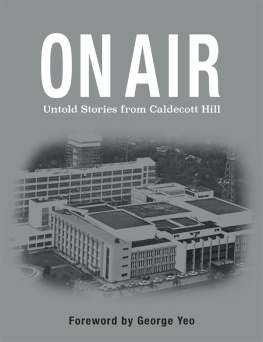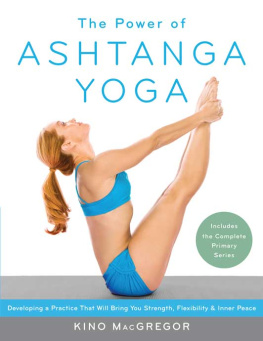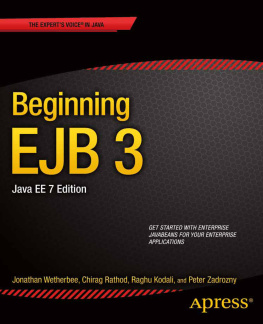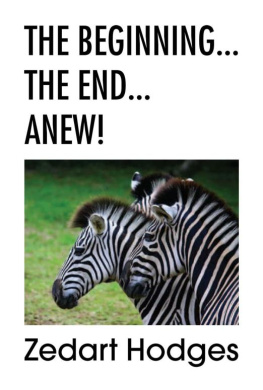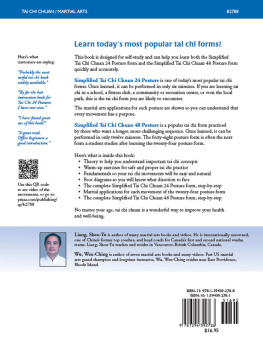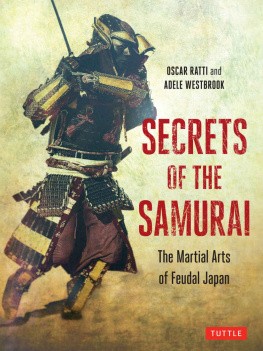I have been privileged to study the martial arts from my youth with many fine teachers, some of them internationally celebrated, others almost unknown but equally elegant in their simplicity, integrity, and devotion to their arts.
I am eternally bound in love and gratitude to the late Grand Master Chiu Chuk-Kai, the eighth-generation master of the Chinese T'ai-Mantis system.
He is gone from this world after more than ninety amazingly productive years, but his benevolent spirit lives on in teachings that have blessed and benefited thousands throughout the world.
 | The Simplified
T'ai Chi Form |


Imagine standing in the center of a clock facing twelve o'clock.
Commencing
Stand naturally with the feet together, arms at the sides, facing twelve o'clock (Fig. 1).
2. Shift the weight slightly to the right foot. With the left foot take a half step to the left so that the feet are a shoulder's width apart (Figs. 2, 3).
3. Palms facing downward, slowly raise both arms forward to shoulder level. Then lower the arms with the palms pressing down gently while bending the knees 50- 60 degrees (Figs. 4- 6).
Note: The whole body should be relaxed, the back straight, and buttocks "tucked in," chin drawn slightly inward with the eyes straight forward.



Part the Horse's Mane (Both Sides)
1. Shift the weight to the right leg while turning at the waist slightly to the right (to one o'clock), and move the left foot close to the right foot with the toes on the floor. At the same time, move both hands to the left, raising the right arm smoothly to shoulder level while moving the left arm under the right. The palms face each other, as if holding a large ball. Look at the right hand (toward nine o'clock) (Figs. 7, 8).
2. Step with the left foot so that the body faces eight o'clock. Place the left heel on the floor first, then shift 70 percent of the weight forward. While doing this, push the back of the left hand forward at eye level while pressing the right hand down obliquely to the side of the right hip with the palm facing downward. Look straight forward (now nine o'clock). You are now in what is known as the "Bow stance" (Figs. 9, 10). You would not be able to hold a bow or shoot arrows in this position, but your posture is reminiscent of that of an archer.


3. Shift the weight to the right foot, turning the left foot slightly outward (to the left). Shift the full weight back to the left foot and draw the right foot forward until it is next to the left foot with the toes on the floor. Simultaneously move both hands to the left as if holding a ball on the left side of the body (Figs. 11-13).

4. Turn the body to the right and take a step forward (to 10:30), placing the right heel on the floor first, and then shift 70 percent of the weight forward into the Bow stance. Simultaneously raise the right hand to eye level with the palm toward the face and eyes following the right palm. Press the left hand down obliquely to the side of the left hip (Figs. 14, 15).
5. Shift the weight to the left foot, turning the right foot slightly outward (to the right). Shift the full weight back to the right foot and draw the left foot forward until it is next to the right foot with the toes on the floor. Simultaneously move both hands to the right as if holding a ball on the right side of the body. Your eyes and head follow the right hand (Figs. 16, 1 7).
6. Turn the body to the left and take a step forward (toward eight o'clock), placing the left heel on the floor first, then shifting 70 percent of the weight forward into the Bow stance. At the same time, push the left hand forward at eye level, palm toward you, while pressing the right hand down obliquely to the side of the right hip. You look straight forward (at nine o'clock) (Figs. 18, 19).

Note: During the execution of Form Two, you should keep the upper body upright but not tense, with the shoulders relaxed. In the Bow stance, the knee of the front leg should be in vertical alignment with the front elbow and toe. While you are moving through the form, try to keep your body moving at the same level rather than bobbing up and down. Try to synchronize the movement of your feet and hands so that they conclude the form a1 the same time.

White Crane Spreads Its Wings
1. From the Bow stance that ends Form Two, shift the full weight to the front (left) leg. Draw the right leg a half step forward and place it behind the left foot. Now shift the weight back to the right leg in the "Sit Back" position. Extend the left leg gently forward into what is known as the "Empty stance."
2. Turn the body slightly to the right, draw the left hand down in front of the face, and move the right hand forward, palm up, as if both hands were holding a ball, and continue the movement of both arms outward into the "White Crane Spreads Its Wings" position. You are now looking forward (at nine o'clock) (Figs. 20, 21).
Note: At the conclusion of this form, the right hand stops in front of and slightly above the right temple with the palm facing inward, and the left hand stops level with the left hip with the palm facing downward. Keep the upper body upright. Remember that when you read "stop," the word is used only to give you a marker for the technical conclusion of the form. You actually keep on moving through to the next form, relaxed, focused, and fluid!


